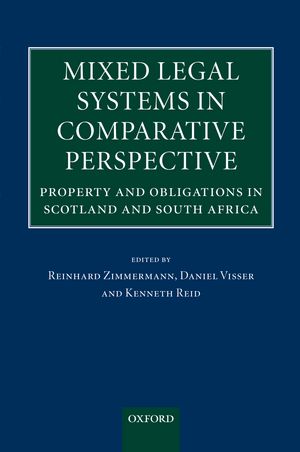
Placed uniquely at the intersection of common law and civil law, mixed legal systems are today attracting the attention both of scholars of comparative law, and of those concerned with the development of a European private law. Pre-eminent among the mixed legal systems are those of Scotland and South Africa.
In South Africa the Roman-Dutch law, brought to the Cape by the Dutch East India Company in 1652 was, from the early nineteenth century onwards, infused with and re-moulded by the common law of the British imperial master. In Scotland a more gradual and elusive process saw the Roman-Scots law of the early modern period fall under the influence of English law after the Act of Union in 1707. The result, in each case, was a system of law which drew from both of the great European traditions whilst containing distinctive elements of its own.
This volume sets out to compare the effects of this historical development by assessing whether shared experience has led to shared law. Key topics from the law of property and obligations are examined, collaboratively and comparatively, by teams of leading experts from both jurisdictions. The individual chapters reveal an intricate pattern of similarity and difference, enabling courts and legal writers in Scotland and South Africa to learn from the experience of a kindred jurisdiction. They also, in a number of areas, reveal an emerging and distinctive jurisprudence of mixed systems, and thus suggest viable answers to some of the great questions which must be answered on the path towards a European private law.